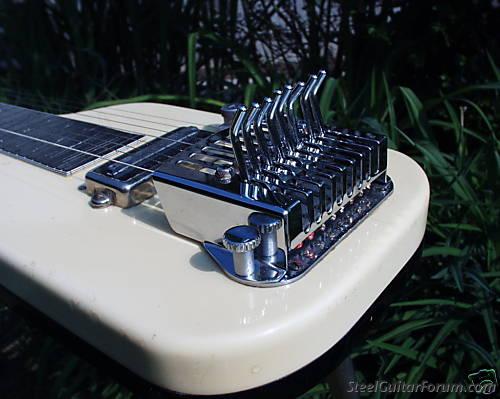


The curious feature is its sandwich construction, which we will come to in a moment.
The top part is in excellent condition, but the bottom part needs to be restored. I removed the bottom part to work on it and it became immediately obvious that it fulfils no purpose.


The top part is the entire lap steel. Without the bottom part it plays and sounds exactly the same. The bottom part is purely cosmetic. Now the leg sockets screw into the bottom part, but that's only because it's there; they could equally well screw directly into the top part.
So, what is the purpose of the bottom part ? It increases the weight of the instrument, and here is another point: the only other person I know who has ever owned a Framus lap steel is Basil Henriques, who owned the three-neck version, which he eventually sold because it was too heavy and wouldn't keep in tune. No wonder it was too heavy, with three of these lap steels screwed to an unnecessary baseplate.
The underneath of the actual lap steel part is unfinished, because it was never intended to be seen. I'm thinking of finishing the underneath and putting the bottom part away in storage. It could be screwed back on in a few minutes if necessary.






